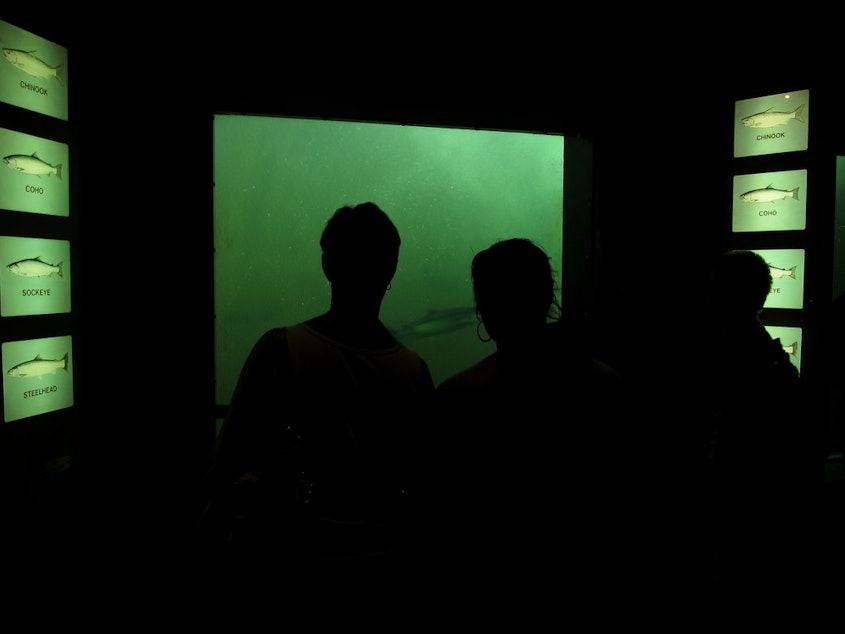'Slowly slipping away.’ Fewest sockeye salmon ever counted at Ballard Locks

Sockeye salmon are returning to Lake Washington in the smallest numbers since record-keeping started.
As of early August, 17,000 sockeye had returned from the ocean, compared to hundreds of thousands at their peak years.
Visitors to the Ballard locks shouldn’t expect to see many sockeye swimming through those fish windows.
“Now they’re likely to see one or two sockeye salmon at any given time at the peak of the run whereas before there were hundreds,” said Aaron Bosworth Department of Fish and Wildlife biologist who oversees a program in partnership with the Muckleshoot Tribe to count fish at the locks.
“One of our valuable resources is kind of slowly slipping away,” Bosworth said.
Bosworth blames global warming.
Life is getting harder for sockeye salmon in the oceans, with warmer water and less food. Things are also worse for young salmon upstream. For example, other fish that eat them are more active as Lake Washington heats up earlier and stays warm for longer.
Sponsored
"Their metabolic rate increases, they're hungrier, and so they're preying at a higher rate on sockeye," Bosworth said.
Predators, such as native cutthroat trout and pike minnows, are a growing concern, said Jason Mulvihill-Kuntz, a salmon recovery manager.
Mulvihill-Kuntz said he is troubled by the low numbers of sockeyes returning through the Locks, he said.
“When you’re talking about a return that’s as low as 17,000, that’s pretty stark, that’s getting to the bottom of the barrel.”
It's an indication that "the habitat isn't there" to support hatching fish in rivers, Mulvihill-Kuntz said.
Sponsored
Sockeye salmon were introduced to the lake in the 1930s from Baker Lake, near Mount Baker.
Chinook numbers are also below average — 987 had returned as of August 4, compared to the 10-year average of 1,390. Chinook mostly return August to early September, so it’s still early to tell how many will come back.




